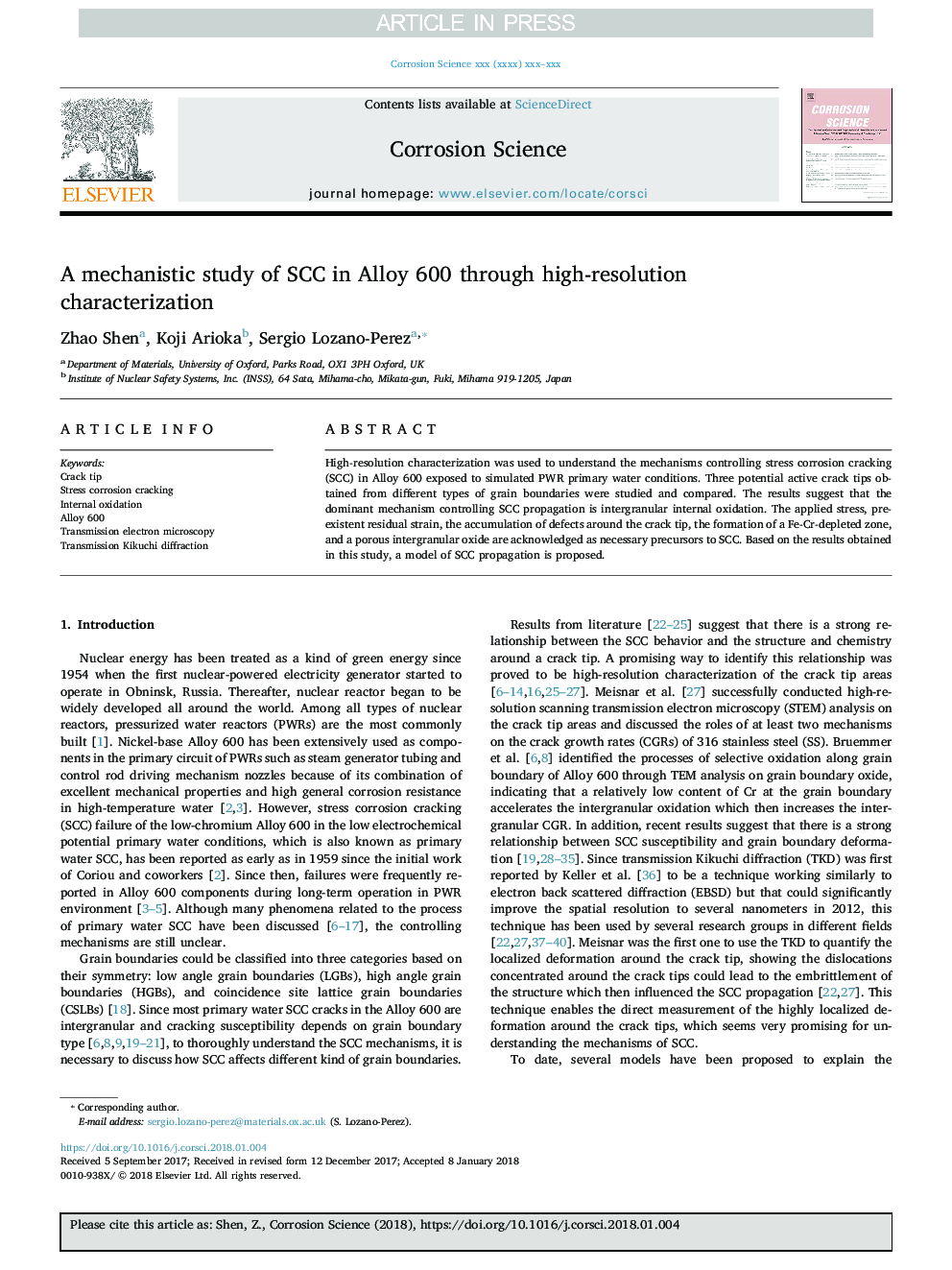| Article ID | Journal | Published Year | Pages | File Type |
|---|---|---|---|---|
| 7893955 | Corrosion Science | 2018 | 16 Pages |
Abstract
High-resolution characterization was used to understand the mechanisms controlling stress corrosion cracking (SCC) in Alloy 600 exposed to simulated PWR primary water conditions. Three potential active crack tips obtained from different types of grain boundaries were studied and compared. The results suggest that the dominant mechanism controlling SCC propagation is intergranular internal oxidation. The applied stress, pre-existent residual strain, the accumulation of defects around the crack tip, the formation of a Fe-Cr-depleted zone, and a porous intergranular oxide are acknowledged as necessary precursors to SCC. Based on the results obtained in this study, a model of SCC propagation is proposed.
Keywords
Related Topics
Physical Sciences and Engineering
Materials Science
Ceramics and Composites
Authors
Zhao Shen, Koji Arioka, Sergio Lozano-Perez,
